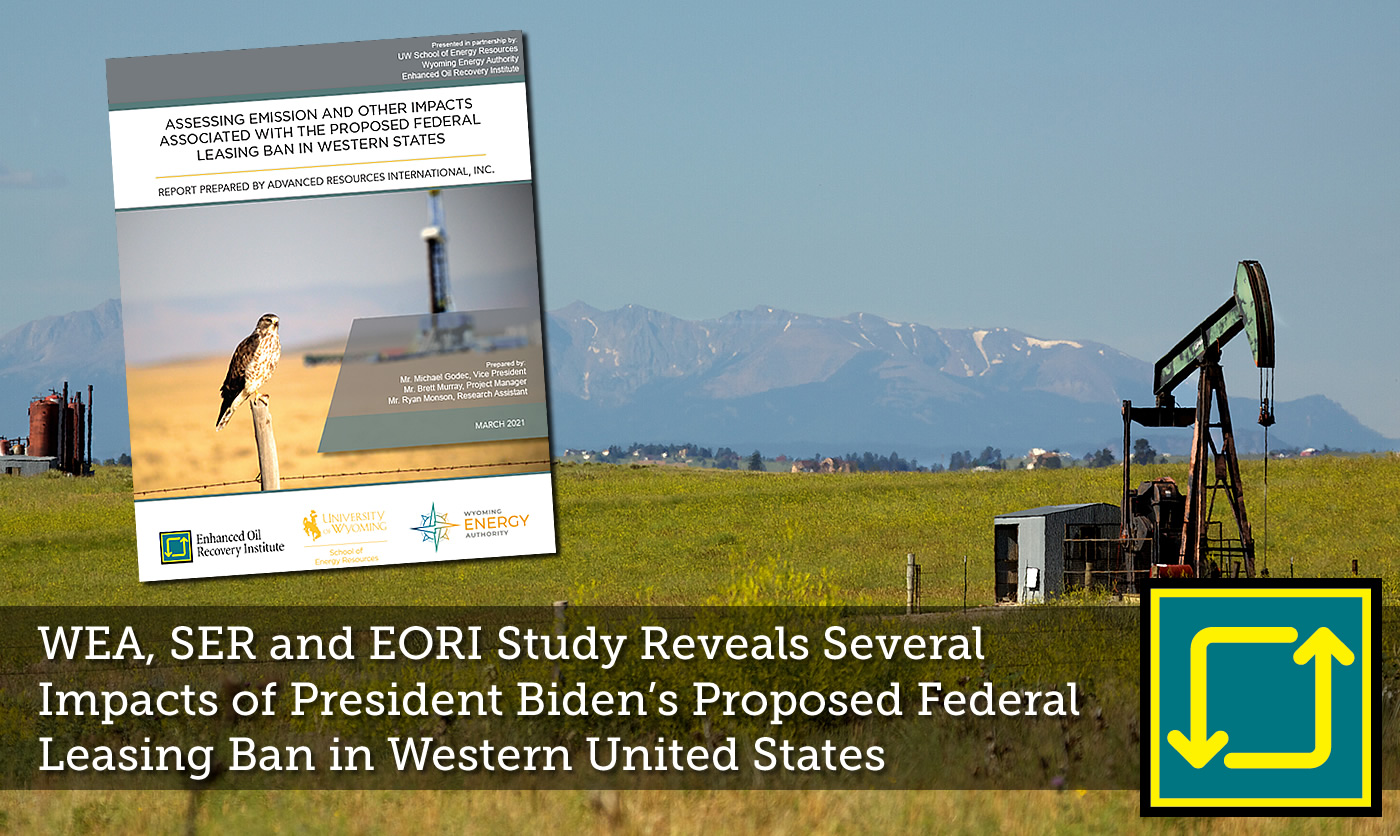The study evaluates the impact of suspended new leasing for fossil fuel production from federal lands and waters in terms of lost production and associated economic impacts and corresponding implications on greenhouse gas emissions.
The Wyoming Energy Authority (WEA), the University of Wyoming’s School of Energy Resources (SER), and the Enhanced Oil Recovery Institute (EORI) studied the environmental and economic impacts of proposed policy initiatives that suspend or restrict new leasing and drilling for fossil fuels on federal lands. The loss of production on these lands, and the associated lost revenue, will have adverse economic impacts on Wyoming and other western states while not furthering the goal of reducing global greenhouse gas emissions.
These reports present estimates on the amount of lost production and lost revenue to western states while also presenting estimates on the impact the proposed federal policy has on actual carbon emissions. The goal of the proposed leasing and drilling ban on federal lands is intended to reduce carbon emissions. As these studies point out, however, with demands for energy remaining the same, emissions associated with probable makeup production from other countries, with dirtier carbon footprints than comparable American operations, counter the intended goal as stated by the Biden administration.
The study reveals several impacts of the proposed ban that include:
- Greenhouse gas emissions could increase because of a federal leasing and/or drilling ban.
- Without an increase in oil and/or gas prices, US oil and gas production could decrease by 21% to 34% by 2030.
- A ban on future drilling on federal lands would prohibit development of 600 to 850million barrels of incremental oil potential from CO2EOR in Wyoming, that would facilitate potential geologic storage of 420 to 570 million metric tons of CO2.
- Without an increase in oil and gas prices, drilling levels in the six western states would drop by as much as 35% due to federal leasing/drilling policies.
- In Wyoming, by 2030, drilling levels decline by 28%, growing to 43% by 2050.
- In Wyoming, declines in expenditures associated with oil and gas well drilling would reach over $800 million per year by 2030.
- In Wyoming, declines in state revenues associated from oil and gas production could reach over $600 million per year by 2040.
Read the entire study here.

